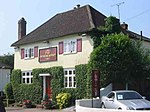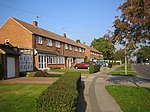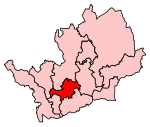Park Street railway station (England)
DfT Category F2 stationsEast of England railway station stubsFormer London and North Western Railway stationsPages with no open date in Infobox stationRailway stations in Great Britain closed in 1859 ... and 6 more
Railway stations in Great Britain closed in 1890Railway stations in Great Britain opened in 1858Railway stations in Great Britain opened in 1890Railway stations in HertfordshireRailway stations served by West Midlands TrainsUse British English from December 2016

Park Street railway station serves the village of Park Street, Hertfordshire, England. It is the penultimate station on the Abbey Line. The station and all trains serving it are operated by London Northwestern Railway.
Excerpt from the Wikipedia article Park Street railway station (England) (License: CC BY-SA 3.0, Authors, Images).Park Street railway station (England)
Park Street, St Albans St Stephen
Geographical coordinates (GPS) Address Nearby Places Show on map
Geographical coordinates (GPS)
| Latitude | Longitude |
|---|---|
| N 51.7249 ° | E -0.3402 ° |
Address
Park Street
AL2 2PE St Albans, St Stephen
England, United Kingdom
Open on Google Maps








